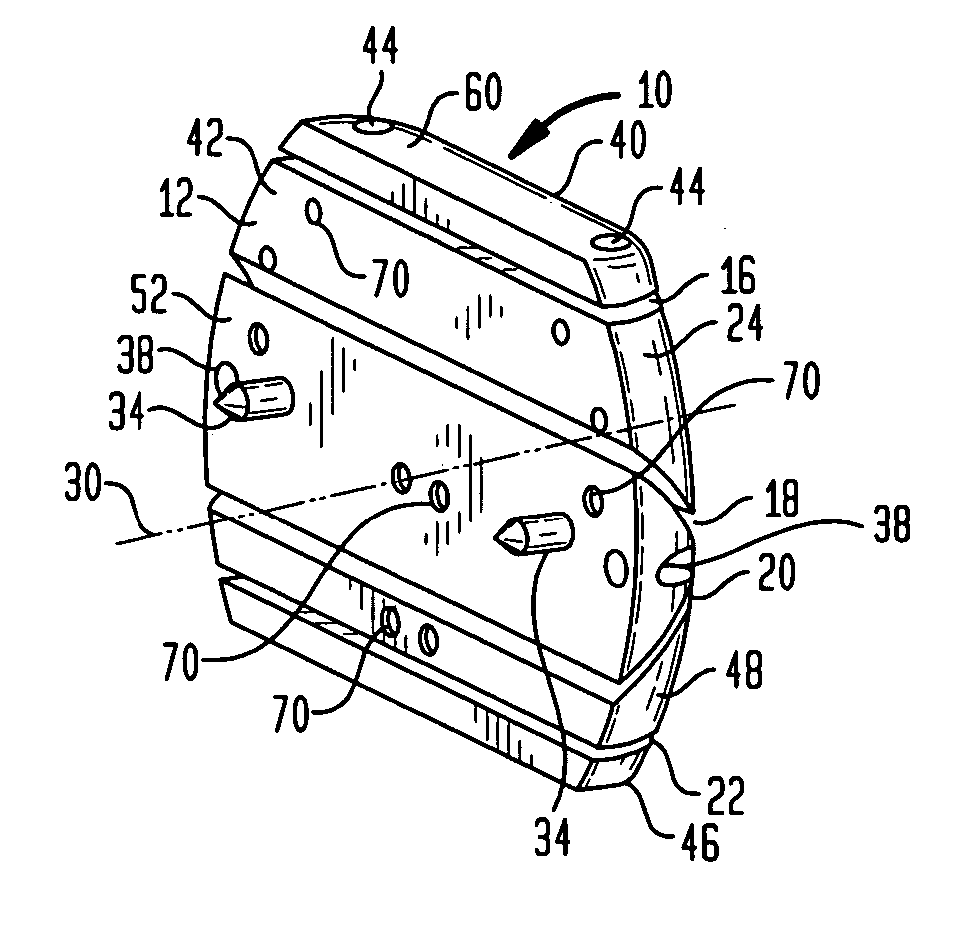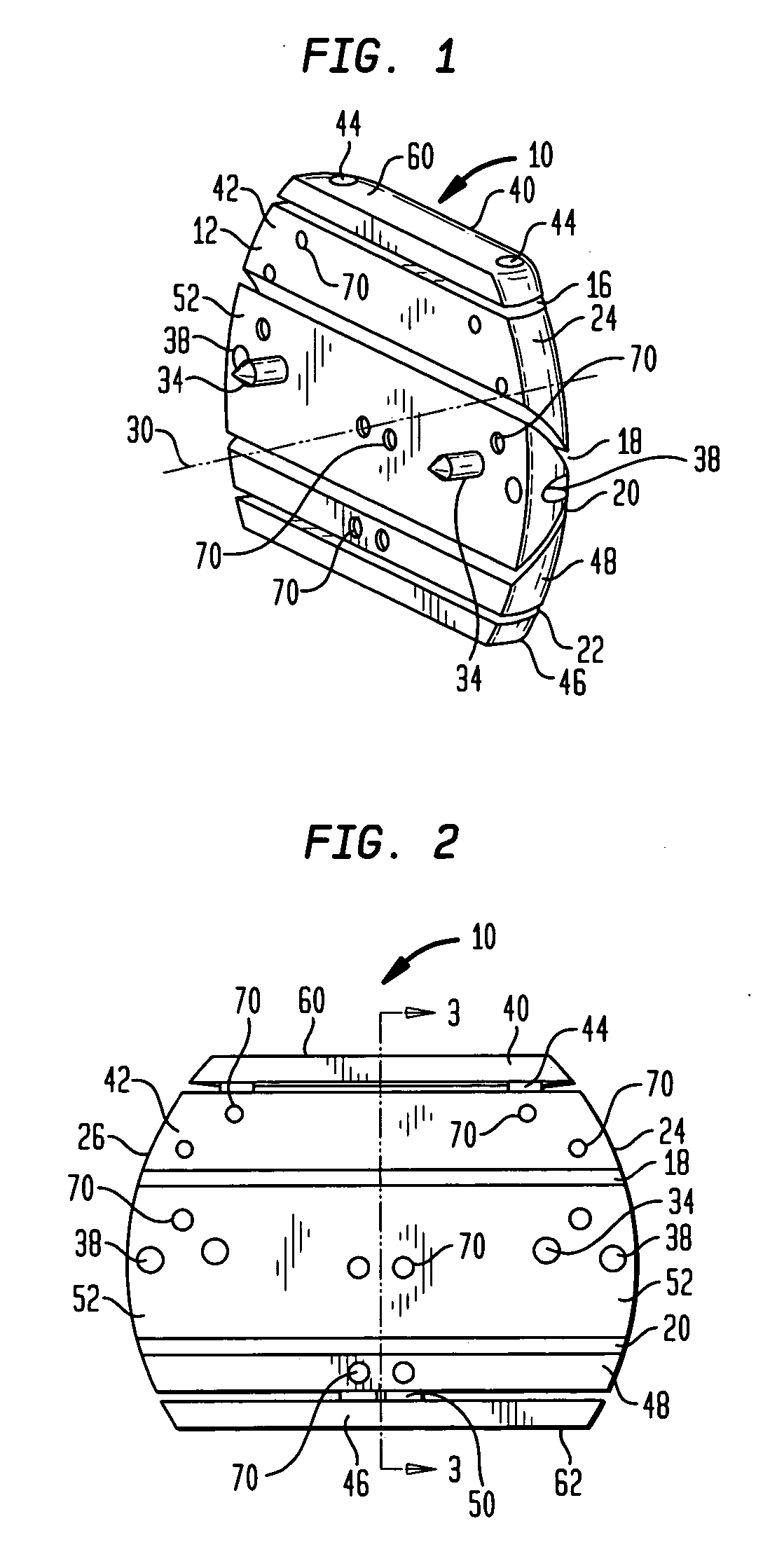Bone shaped cutting block
a cutting block and bone technology, applied in the field of bone shaped cutting blocks, can solve the problems of increasing surgical time and risk, prolonging patient recovery, etc., and achieve the effect of removing any potential damage to surrounding soft tissu
- Summary
- Abstract
- Description
- Claims
- Application Information
AI Technical Summary
Benefits of technology
Problems solved by technology
Method used
Image
Examples
Embodiment Construction
[0024] Referring to the figures, there is shown a cutting block generally denoted as 10 which includes a proximal bone facing surface 12 and an opposite distal facing surface 14. While in the preferred embodiment surface 12 is flat for contacting an already resected distal femur, it is possible to mount the block to a non-resected distal femur and have surface 12 curved to match the shape of the natural condyles. In the preferred embodiment, the block includes four slots 16, 18, 20 and 22, respectively. Slot 16 is adapted to perform an anterior cut, slot 22 is adapted to perform a posterior cut, slot 18 is adapted to an anterior-chamfer cut and slot 20 is adapted to perform a posterior-chamfer cut. These guide slots are preferably used with an oscillating saw blade in a well known manner.
[0025] The cutting block includes perimeter surfaces 24 and 26 which are curved in a plane perpendicular to a central axis 30 perpendicular to the bone facing surface 12 of cutting block 10. Axis 3...
PUM
 Login to View More
Login to View More Abstract
Description
Claims
Application Information
 Login to View More
Login to View More - R&D
- Intellectual Property
- Life Sciences
- Materials
- Tech Scout
- Unparalleled Data Quality
- Higher Quality Content
- 60% Fewer Hallucinations
Browse by: Latest US Patents, China's latest patents, Technical Efficacy Thesaurus, Application Domain, Technology Topic, Popular Technical Reports.
© 2025 PatSnap. All rights reserved.Legal|Privacy policy|Modern Slavery Act Transparency Statement|Sitemap|About US| Contact US: help@patsnap.com



